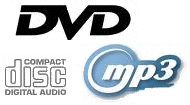
|
|
The division of the field of applied psychophysiology into biofeedback and neurofeedback was originally necessary to allow neurofeedback to put down roots. However, the division has become counter-productive for the field of applied psychophysiology. A rapprochement of the two disciplines now needs to be actively sought and promoted.
Neurofeedback has shown itself to be a versatile tool for the recovery of brain function and acquisition or restoration of good self-regulation. On the other hand, the EEG often does not change dramatically throughout the training process, and therefore does not offer a good index of progress in the general case. Peripheral measures of physiology tend to reflect physiological change with great sensitivity and immediacy. On the other hand, in the context of neurofeedback they offer more limited training opportunities. An approach that combines the relative strengths would employ neurofeedback for training purposes and peripheral measures for progress monitoring. Better clinical guidance of the neurofeedback process would be in prospect. For some purposes, matters might well be reversed: peripheral biofeedback modalities should be employed, and the EEG might well be used as an independent index of state change or of improved regulation. An alternative approach combines all of the relevant measures, central and peripheral, in a combined ?Figure of Merit? on which the client trains. Paradoxical findings from feedback research indicate the need for a more unified and generalized theory of self-regulation. A network model is proposed as a formulism for such a generalized theory. As a result of impending changes in the conduct of feedback, along with a more supportive theoretical framework, a more integrated understanding of feedback will emerge. The independent lines of evidence for each particular kind of feedback can then be combined in support of the more inclusive model. Such an inclusive view does greater justice to the organization of our regulatory systems, and it will also command greater credence from the allied health professions.
Siegfried Othmer has been active in neurofeedback for more than twenty years, through instrumentation development, clinical research, and the conduct of professional training courses. Other Products by Siegfried Othmer, Ph.D. 1) Simplicity and Complexity in Neurofeedback
To View Comments or Join the Conversation: |
Most Viewed of all Products
Interhemispheric EEG Training: Discussion and Demonstration
|


